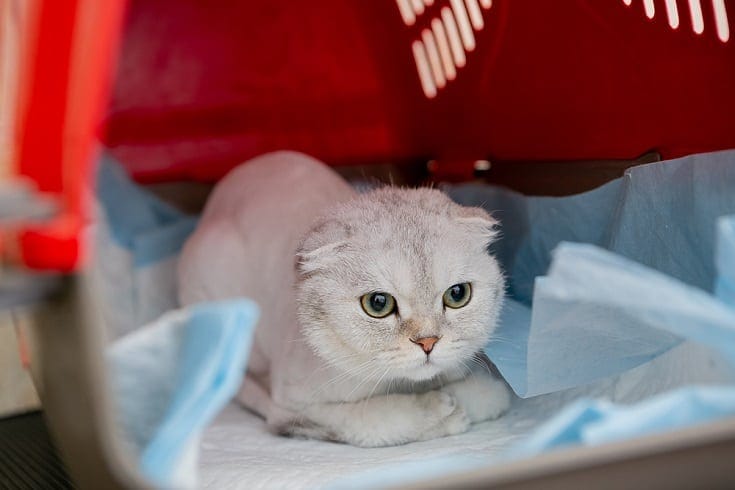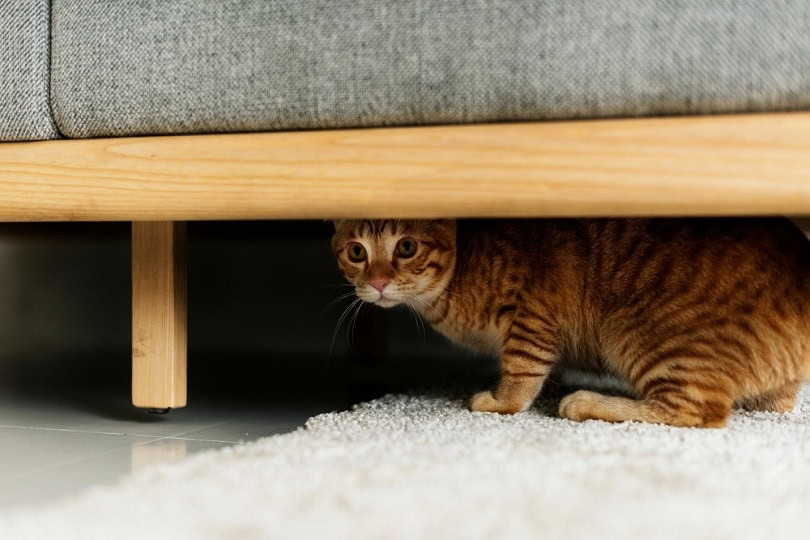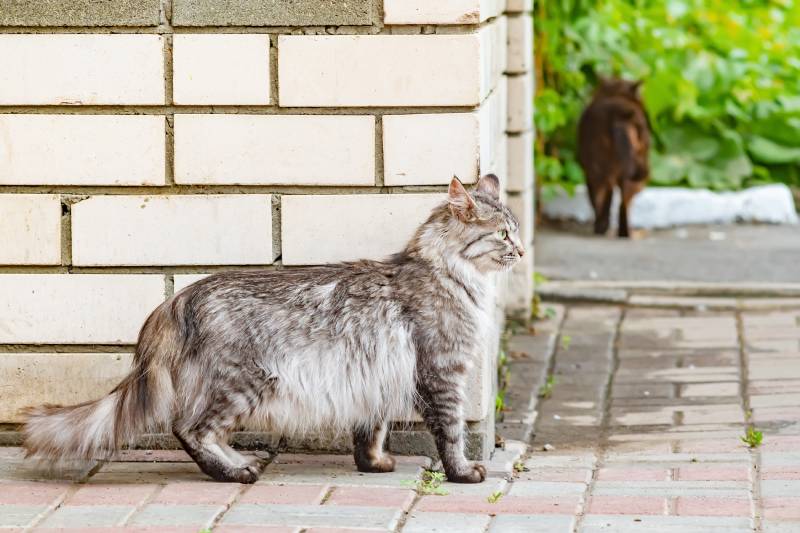VET APPROVED

The information is current and up-to-date in accordance with the latest veterinarian research.
Learn more »Click to Skip Ahead
Moving isn’t just a stressful experience for humans. Pets can also feel stressed, especially because they may not initially understand that they’re permanently moving away from their old home.
So, if your cat is hiding after you’ve moved to a new home, you don’t have to worry too much. It’s normal behavior for cats to hide when they’re placed in a new environment or situation. Here’s what you can do to help your scared kitty as they get accustomed to their new home.

The 5 Tips to Help a Scared Cat After a Move to a New Home
1. Stay Calm and Act Normal
Contrary to popular belief, cats can sense and recognize emotional signals from humans. So, there’s a good chance they picked up on any stress you’ve had during your move. They may not understand what the cause of this stress is, which can make them feel more anxious about the uncertainty.
Therefore, one of the best things you can do for your cat is to remain calm and create a peaceful environment in your new home. You may be worried about your cat hiding, but your concern can cause them to feel more uncertain or unsafe in their new surroundings.

2. Follow Your Usual Routine
Cats are very observant of their owners, so there’s a good chance that your cat’s watching your movements in the new home. If you can, try to be consistent with your previous routines in your new home.
For example, if you had a consistent morning routine in your old home, replicate it in the new residence. This repetition can show your cat that you’re doing the same routines in a new environment, which can make the new environment feel safer with time.
3. Place Your Cat’s Belongings in a Quiet Area
The new living space may be too big of a transition for your cat. So, you can put your cat’s things in a quiet and safe area of the home. A smaller bedroom will be less daunting than a vast living room.
A small room for your cat can also be beneficial if you anticipate a lot of new furniture to come in after you’ve moved in with your cat. The additional foot traffic and drop-off of large and bulky items can be intimidating for your cat. So, the ability to hide in a secluded room from all the unknown actions can help your cat feel safer in their new home.

4. Encourage Your Cat to Explore on Their Own
Don’t try to force your cat out of hiding. You can try to lure them out with toys and treats, but if your cat is adamant about staying hidden, it’s completely fine. Forcing your cat to do something they’re uncomfortable with can make them anxious and develop a negative association with your new home.
5. Act Reassuringly Toward Your Cat
There’s a good chance that your cat may have felt a little overlooked while you were busy with your move. Therefore, it’s essential to play with your cat and pay attention to them during your move.
Provide plenty of opportunities for your cat to play with their favorite toys and relax near you. You can also encourage your cat to come out of hiding with some of their favorite treats.


When to Be Concerned
It can take a cat a couple of weeks to start venturing out from hiding. If your cat’s eating fairly normally and using the litter box, you don’t have to worry. However, if you notice visible signs of significant distress, such as an unkempt coat, urine marking, and complete loss of appetite for several days, reach out to a veterinarian.
You can also enlist the help of a reputable cat behaviorist, who can help create an environment that feels safe for your cat.


Tips for Preparing Your Cat for a Move
Many pet owners wish that they could just explain to their pets about moving. Even if your cat understood the concept of moving, they could still feel stressed out.
While a perfectly smooth move into a new home may not be possible, there are a few things you can try to do to make the transition easier for your cat.
Plan a Couple of Visits to the New Home With Your Cat
If you’ve secured a new home and have early access to it before moving in, schedule a few visits with your cat. These visits can help your cat become familiar with the new home. You can even provide some of their favorite treats or let your cat eat in the new home to create a positive association with the new environment.

Slowly Move Your Cat’s Belongings to the New Home
A gradual transition can be easier to handle than a sudden shift. When your cat visits the new home, bring some of their toys with you and keep them there. Then, during subsequent visits, your cat will see their favorite toys waiting for them. You can even bring a spare litter box to the new home to make it more familiar to your cat.
Remain as Calm as Possible
Moves are notorious for being stressful, so it can be challenging to remain calm. Make sure to take care of your mental and emotional well-being during this time.
Also, try to set aside time to spend with your cat. If your cat’s a cuddler, allow space for them to snuggle up to you and rest. Do your best to keep regular play sessions in your daily schedule. Little things like these can keep your cat feeling reassured and less anxious throughout the moving process.

Wrap Up
Moving to a new home can be challenging for humans and pets. So, you can go easy on your cat if they spend a few weeks hiding in their new home. However, you can encourage them to explore the new space and spend time with you by resuming their old routine and staying calm.
Eventually, your cat will warm up to their new environment and act normal again.
Related Reads:
Featured Image Credit by: Rawpixel.com, Shutterstock












